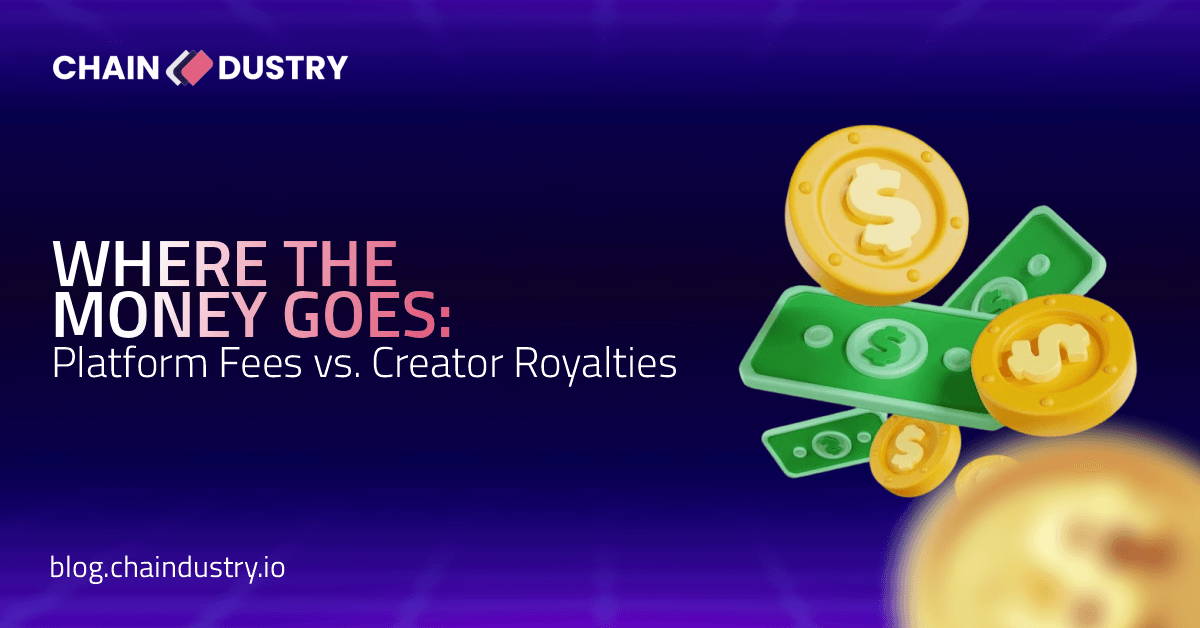Introduction
When NFTs first exploded in 2021, one of their biggest selling points was creator royalties—artists could earn a percentage every time their work resold on the secondary market. This feature was hailed as a revolution for digital creators, promising ongoing income instead of a one-time sale.
But in 2025, the landscape has shifted. Some marketplaces have reduced or even removed mandatory royalties, leaving artists asking a tough question: are NFT royalties dead—or just evolving?
What Are NFT Creator Royalties?
Royalties are a cut of the resale price, typically ranging from 2.5% to 10%, automatically sent to the creator whenever an NFT changes hands. Unlike the traditional art world where resales often bypass the original artist, NFT smart contracts made continuous revenue possible.
This made NFTs not just art but a new economic model for creators.
Why Marketplaces Are Changing the Rules
Marketplaces like Blur and OpenSea have experimented with making royalties optional to attract more traders. Their reasoning:
1. Lower trading friction: Buyers and sellers keep more of the profits.
2. Competitive pressure: Marketplaces compete to capture liquidity.
3. Speculation-focused demand: Many NFT buyers prioritize flipping over supporting creators.
This shift has sparked debate, while some argue it’s good for liquidity, others say it undermines the very reason creators embraced NFTs in the first place.
How Artists Are Adapting
Forward-thinking NFT creators aren’t giving up. Instead, they’re exploring new strategies:
1. Exclusive Access NFTs: Locking perks, community access, or future drops behind NFT ownership.
2. On-chain Licensing: Using smart contracts to enforce usage rights.
3. Direct-to-Collector Sales: Building relationships with loyal supporters instead of relying solely on marketplaces.
4. Dynamic NFTs: Creating evolving assets that deliver ongoing value, incentivizing holders to keep rather than flip.

Where the Money Goes – Platform Fees vs. Creator Royalties
When an NFT resells for $1,000, that money doesn’t all go straight to the seller’s pocket. Here’s how it usually gets split:
-
Marketplace Fee (2–5%) → Platforms like OpenSea, Blur, or LooksRare charge this cut to keep their business running. On a $1,000 sale, that’s anywhere from $20 to $50.
-
Creator Royalty (0–10%) → This is the “thank you” payment that goes back to the original artist. If enforced, it could mean $0–$100 depending on the rate.
-
Seller Proceeds (the rest) → Whatever is left after fees goes to the person flipping the NFT, usually the majority share—$850–$980.
Here’s the issue:
When royalties are optional, traders often choose to skip them. That means creators may get nothing from resales, while platforms and flippers walk away with nearly the entire $1,000.
When royalties are enforced, the system is fairer to artists—but some marketplaces argue it discourages trading because costs rise.
So the tension is clear:
a. Collectors and creators want royalties (to support ongoing work).
b. Marketplaces and flippers want lower costs (to boost trading volume).
This tug-of-war is shaping how NFT economics evolve in 2025.
What This Means for NFT Artists in 2025
Royalties aren’t “dead” but they’re no longer guaranteed.
Artists must diversify revenue beyond marketplace royalties.
Collectors matter more than ever, building loyal communities can protect income streams even if royalties decline.
NFTs are still a tool for creator empowerment, but like any tool, their effectiveness depends on how they’re used.
Conclusion
Creator royalties may not look like they did in 2021, but they’re far from gone. Instead, the NFT ecosystem is evolving toward a creator-driven economy where long-term value and community engagement matter more than speculative flips.
For artists, the key takeaway is this: don’t rely on royalties alone, you have to innovate, adapt, and build direct connections with your collectors.
